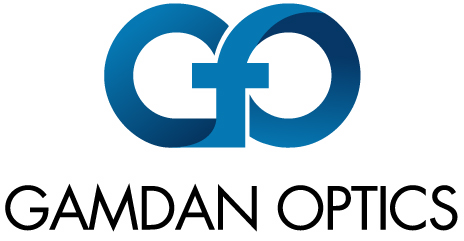Before light sources with considerable coherence length were available (think lasers), opticians formed fringe patterns using a test plate, also known as an optical flat. Spherical test plates also exist, to check the surface of lenses, or curved mirrors. These test plates could be placed in close proximity to each other, so common light sources could be used.
Read MoreA perfectly generated wave may be plano or spherical. What happens to it as it travels may alter that perfect shape. This circumstance is called wavefront distortion.
Tight control of crystal growth, sophisticated selection of material, near compulsive attention to detail in manufacturing and polishing combine with discriminating inspection practices to ensure that GAMDAN Optics products are free of transmissive wavefront errors.
Read MoreSurface texture, also referred to as surface roughness, is an important parameter for many manufactured items. It can be measured on ground or machined surfaces and is especially significant for polished surfaces. The performance of optical elements and the processing from shaping, to grinding, to final polishing is largely influenced by surface roughness. The surface roughness at each step of fabrication is a result of the operation, the substrate properties, and the conditions of the machine to part interactions, with a little chemistry thrown in for good measure
Read MoreThe wave-like behavior of photons leads to interference between two wavefronts which may be constructive or destructive. Usually that interference is partial; there is not total destruction or canceling, nor doubling of intensity for constructive interference. The result is a pattern of lighter and darker regions. This pattern often presents itself as lines (straight or arcs) or as closed circles. In some cases they may be irregular, even jagged.
Read MoreOptical fabrication operations such as grinding and polishing leave traces in the material below the surface being worked and while subsurface damage seems inevitable GAMDAN Optics has proven to minimize SSD. See the photos we took in our lab and the results.
Read MoreGAMDAN’s proprietary UV-grade superpolishing process (having achieved record setting Laser Induced Damage Threshold (LIDT)), and high LIDT coatings enable you to get the most out of your laser design, whether you generate doubled or tripled frequency light.
Read MoreAn interferometer is a device to make precise measurements using light. Modern interferometers often use laser light because the light is generally a discrete wavelength and the light beam can readily be collimated or expanded. The name is derived from utilizing the characteristic property of the wave-like nature of light to combine a light beam with another, or often with itself, to cause subtraction or addition to the intensity at a point (interference) measured (metered) by the instrument.
Read MoreIn the most general terms, laser induced damage is any undesirable degradation of the coating, surface, or bulk material which causes a loss of function, generally to an optical element, and results from exposure to a laser beam. Laser damage, on the other hand, is what happens when you drop your laser or leave it out in the rain. But "laser damage" is often verbal shorthand for laser induced damage. We will stick with the more precise term here.
Read MoreBeta Barium Borate is an exceptional nonlinear crystal. Its chemical formula is BaB₂O₄. BBO is a negative uniaxial crystal, which is capable of phase matching for second-order photonic interactions over almost its entire transparency range (from the UV, 185 nm to the Near Infrared, 3.5 µm).
Read MoreGAMDAN uses the highest quality hydrothermally grown KTP. It is characterized by low absorption, and resistance to gray tracking (photochromic damage) in high power applications. There is a much cheaper form of KTP which is not suited for high energy lasers. It is grown by the flux method. If you have a green laser pointer in your pocket, it most likely has a chip of flux grown KTP. Find out more about GAMDAN’s KTP offerings and why we have the most superior KTP available for your applications.
Read MoreLithium Triborate, LiB3O5, or LBO-- all the same to me, but let's be friends, just call me LBO. I am an outstanding crystal for non-linear optics, the best of my type. But why am I special, so special? It probably has something to do with the lithium.
Read More











